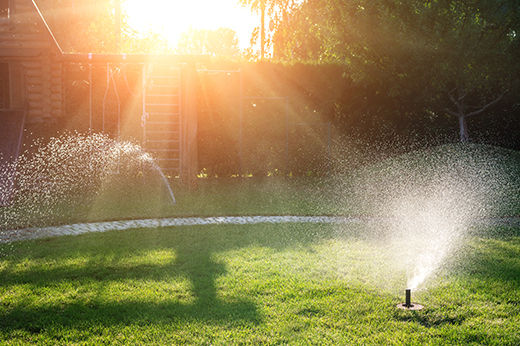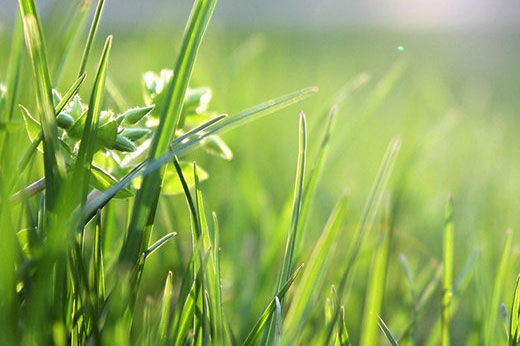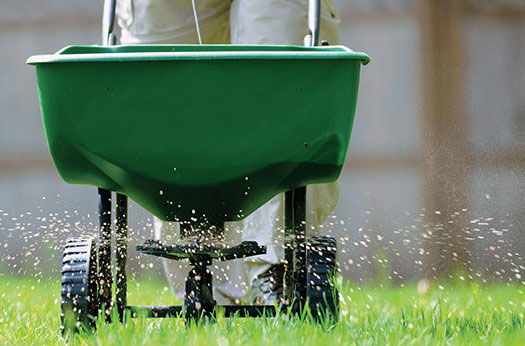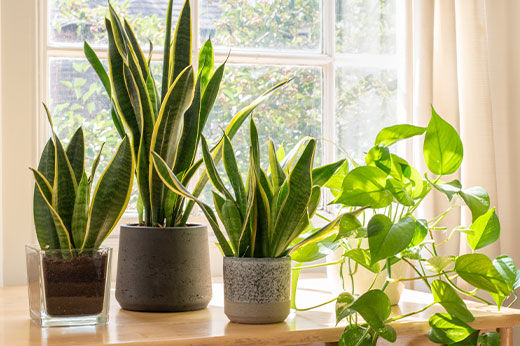How to Get Rid of Fruit Flies
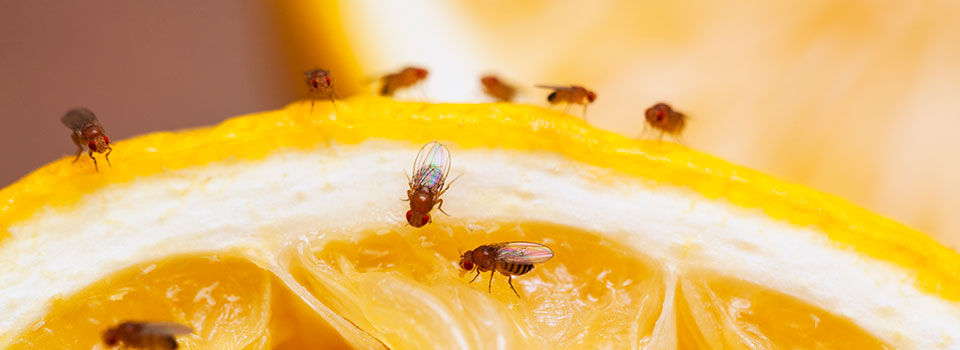
We've all experienced it—glancing at a fruit basket only to see a swarm of fruit flies! These little pests seem to appear out of nowhere and quickly overtake your kitchen. Just when you swat one away, two more appear in its place.
What causes these annoying flies to take over your home? Where do fruit flies come from? If you're wondering how to control fruit flies in your home, you can take a few steps to end fruit flies once and for all. It all starts with early intervention.
Where Do Fruit Flies Come From?

If you’ve experienced a fruit fly infestation, you’ve probably wondered how they appear seemingly out of nowhere. Do fruit flies hatch out of thin air? How do they just appear one day?
Fruit flies are scientifically known as Drosophila melanogaster and are members of the fly family. They reproduce quite prolifically, with adult flies laying eggs on under-ripened or just-ripe fruit. After five days, the larvae hatch and begin feasting on the fruit that's just hit the fully ripe stage as their primary food source.
What's the harm in these little pests (besides being annoying)? Fruit flies carry many bacteria, including listeria, E. coli, and salmonella. They're attracted to overripe fruit and rotten food, and their eggs and larvae are nearly undetectable to the human eye.
Often, we don't notice fruit flies until they've hatched and reached their flying stage. At that point, it feels like they've taken over. They're also fully mature at their flying stage, so adult fruit flies can lay eggs all over food in your kitchen. They're especially prevalent when conditions are ideal in the late summer and early fall months.
Can You Prevent Fruit Flies?
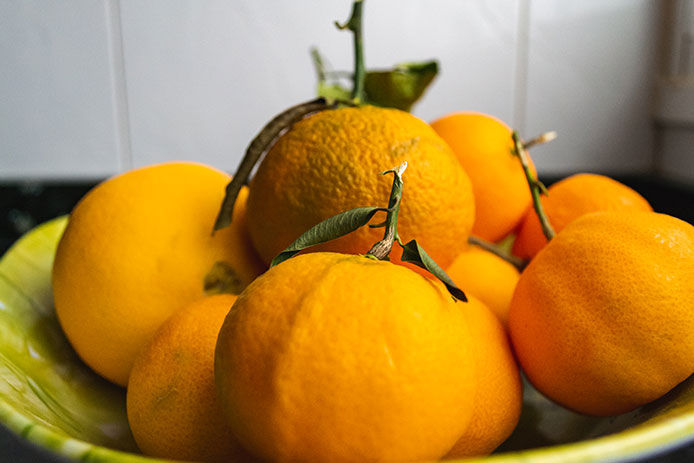
Like many household pests, prevention is crucial for keeping fruit flies at bay. They can enter through open or drafty windows and even squeeze through the mesh of screens. They're incredibly adept at reproduction, creating hundreds of offspring in a very short time.
What’s even more distressing is that when you smash or swat a fruit fly to kill it, it releases pheromones that bring even more flies to the area. So, what is the best way to get rid of fruit flies altogether? What kills fruit flies?
It’s important to note that fruit flies can’t survive temperatures above 100 degrees Fahrenheit. So heating food will kill them. Similarly, they can’t survive cold temperatures below 32 degrees (in the egg or larval stage). So, washing fresh produce thoroughly when you get home from the grocery store and keeping fruit in the fridge rather than a countertop fruit bowl will help prevent these pests. Immediately throw out any rotten fruit. Keep your windows closed, especially when the weather is warm and moist (conditions where fruit flies thrive).
But once fruit flies have started hatching in your home, you may need to take other steps beyond preventative measures. Below, we outline 4 tips for getting rid of fruit flies. Before you follow these steps, it's also important to confirm that the bugs are actually fruit flies. The fungus gnat is remarkably similar to fruit flies and often lives in the soil of houseplants. The best way to differentiate is that fruit flies are brown or reddish-orange, while fungus gnats are black or grey.
What is the Best Way to Get Rid of Fruit Flies?

So, you have a fruit fly invasion. What is the best way to get rid of fruit flies? The ideal method will depend on several factors.
A good place to start getting rid of fruit flies is to deep clean your kitchen. Wipe down the kitchen counters, eliminating any residue from spilled alcohol, sugar, or fruit juice. Thoroughly rinse and clean the kitchen sink drains and garbage disposals. Empty the trash cans and take out the trash. Put away any damp mops and clean up any food debris.
Rinse all your produce and store it in the fridge. Check it for any overripe spots and get rid of anything past its prime. Chances are high that fruit flies have deposited eggs there, and you want to ensure none survive. Once you've taken these steps, it's time to try one of the following methods for killing fruit flies.
Method 1: Apple Cider Vinegar Fruit Fly Trap

Fortunately, one easy way to kill fruit flies is with vinegar. Flies are particularly drawn to apple cider vinegar. You can use apple cider vinegar to your advantage to set a DIY homemade fruit fly trap.
Pour a little vinegar into a glass or jar and cover it with a layer of plastic wrap, secured with a rubber band. Poke a few small holes in the top of the plastic wrap so the flies can get inside (they won't be able to get out). After a week or so, you can toss out the vinegar and flies.
Another way to use vinegar as an effective trap is to add dish soap to a small jar or bowl of vinegar. Use about three drops of dish soap to about ¼ to ½ a cup of vinegar. The flies will go to the bowl to drink the vinegar, and the dish soap reduces the surface tension of the vinegar. Fruit flies sink and can’t resurface.
Finally, you can use a paper cone instead of dish soap or plastic wrap. Put out a jar with some ripe fruit (like a slice of apple or banana) and a small amount of vinegar. Roll a piece of paper into a cone, with the narrow side of the paper in the jar. The fruit flies go into the jar, but they're trapped by the cone.
Method 2: Rubbing Alcohol Spray
One great way to kill fruit flies is with common rubbing alcohol. You can use 70% isopropyl alcohol in a spray bottle to spritz (and kill) the flies. Look for a bottle that sprays a fine mist.
Fortunately, common household rubbing alcohol also kills the eggs and larvae of fruit flies. If you use the spray on cooking surfaces, wipe it down with soapy water afterward to prevent any residue from getting on food.
Method 3: Commercial Fruit Fly Sprays
A commercial flying insect killer is also a great choice for getting rid of fruit flies. It's important to look at the different types of sprays and select one that is safe to use indoors, especially near food.
Ensure you thoroughly wash the surfaces with soapy water after spraying to remove any spray residue that might be close to your food. Follow the instructions on the spray carefully and to the exact specifications.
It’s important to note that not all commercial flying insect sprays are designed for fruit flies. Some sprays may also be more potent than others. For safety, be sure to select the most natural spray option that you can find. Look for sprays that indicate they are non-toxic to humans and pets.
Method 4: Beer Bottle or Wine Trap

If you have some aging beer or a nearly empty bottle of wine in the back of your fridge, you can put it to good use as a fruit fly trap.
You can either use it the same way you would use vinegar or leave the narrow-necked bottle out on the counter. Flies are drawn to the sweet smell of beer and wine. They like any sugary drinks. They will dive in, and they won't be able to find their way back out.
If you don’t feel like DIY-ing your own trap, you can also purchase a commercial fruit fly trap. These store-bought traps work similarly to the bottle method above. They contain a liquid lure that attracts fruit flies into a chamber, where they can’t escape. Some of them are disposable, and some types are reusable. These are an especially good option for heavy infestations.
Enjoy a Fly-Free Kitchen

If you start to notice that the tiny pests have moved in, don't worry. You can get rid of fruit flies in just a few days with just a little effort. Remember that even when you trap fruit flies, removing their food sources and anything that might be drawing them to your home for the entire life cycle (which can take several weeks) is important. The good news is that you eliminate their breeding sites once you've put away their favorite foods.
Be sure that you keep the counters free of any food spills, especially fruit juice and alcohol. You’ll want to wipe all surfaces regularly and wash and dry produce as soon as you bring it home from the store. Keep your fruits and vegetables in the fridge, where fruit flies can’t reach them.
If you need supplies to kill fruit flies, your local Do it Best has you covered. We have everything you need to keep your home pest-free—especially when it comes to flying insects.
